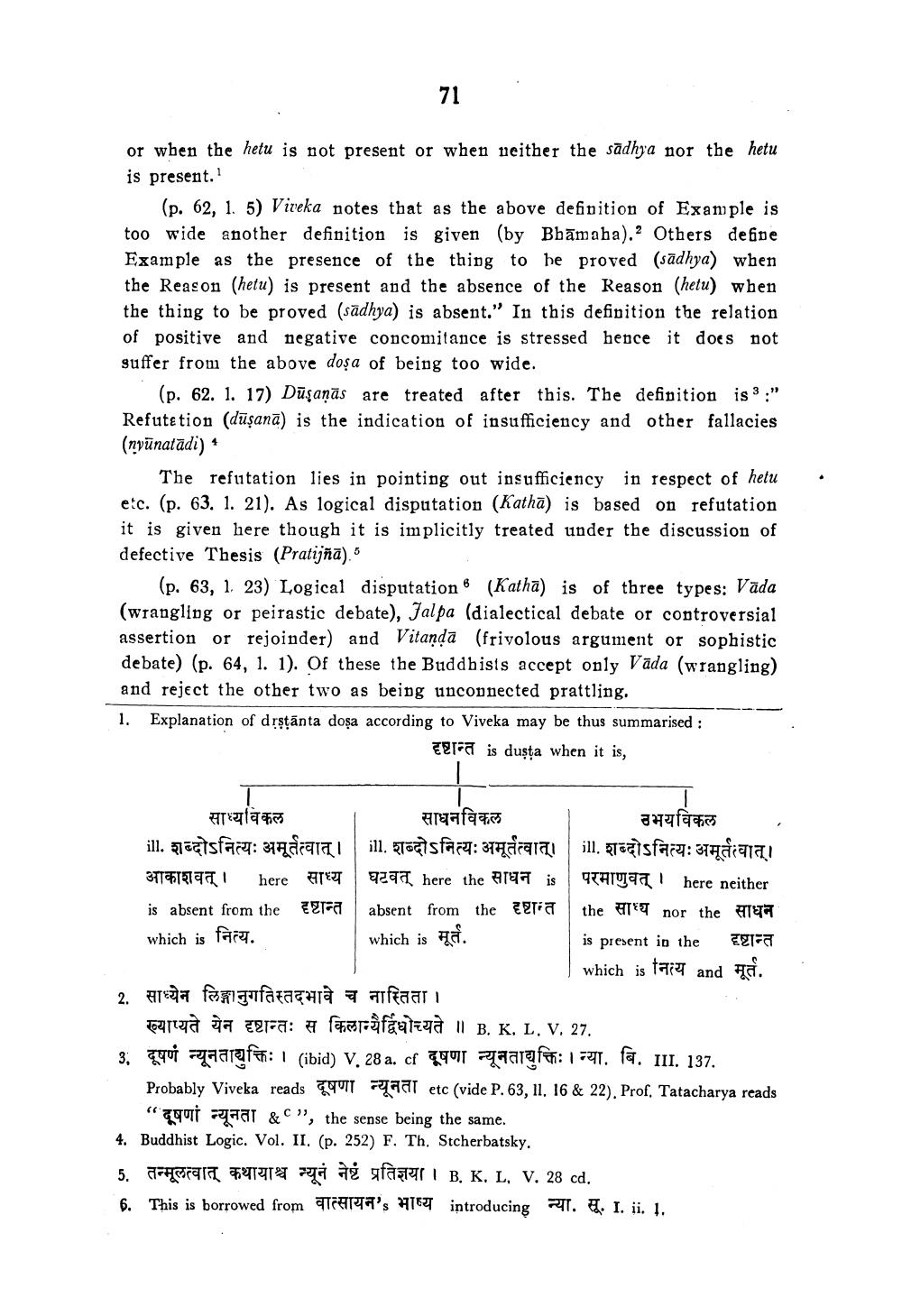________________ or when the hetu is not present or when neither the sadhya nor the hetu is present. (p. 62, 1. 5) Viveka notes that as the above definition of Example is too wide another definition is given (by Bbamaha).Others defpe Example as the presence of the thing to be proved (sadhya) when the Reason (hetu) is present and the absence of the Reason (hetu) when the thing to be proved (sadhya) is absent." In this definition the relation of positive and negative concomitance is stressed hence it does not suffer from the above dosa of being too wide. (p. 62. 1. 17) Dusanas are treated after this. The definition is 3 :" Refutation (dusana) is the indication of insufficiency and other fallacies (nyunatadi) The refutation lies in pointing out insufficiency in respect of hetu etc. (p. 63. 1. 21). As logical disputation (Katha) is based on refutation it is given here though it is implicitly treated under the discussion of defective Thesis (Pratijna). (p. 63, 1. 23) Logical disputation 6 (Katha) is of three types: Vada (wrangling or peirastic debate), Jalpa (dialectical debate or controversial assertion or rejoinder) and Vitanda (frivolous argument or sophistic debate) (p. 64, 1. 1). Of these the Buddhists accept only Vada (wrangling) and reject the other two as being unconnected prattling. 1. Explanation of drstanta dosa according to Viveka may be thus summarised : Tetra is dusta when it is, which is a साध्यविकल साधनविकल उभयविकल ill. शब्दोऽनित्यः अमूर्तत्वात् / | ill. शब्दोऽनित्यः अमूर्तत्वात्। | ill. शब्दोऽनित्यः अमूर्तत्वात्। 37791797 I here ATET घटवत् here the साधन is परमाणुवत् / here neither is absent from the EET- absent from the दृष्टान्त the साध्य nor the साधन which is face. is present in the 2017 which is नित्य and मूर्त. 2. साध्येन लिङ्गानुगतिस्तदभावे च नास्तिता। warya 99 Terra: pafcatega il B. K. L. V. 27. 3; quoi rzaarafi: 1 (ibid) V. 28 a. cf 901 maargfer: 1 7271. fa. III. 137. Probably Viveka reads CTT paat etc (vide P. 63, 11, 16 & 22). Prof. Tatacharya reads "aqui qaat &C", the sense being the same. 4. Buddhist Logic. Vol. II. (p. 252) F. Th. Stcherbatsky. 5. Frant 1924 sfaturi B. K, L, V. 28 cd. 6. This is borrowed from वात्सायन' भाष्य introducing न्या. सू. I. ii. 1.




